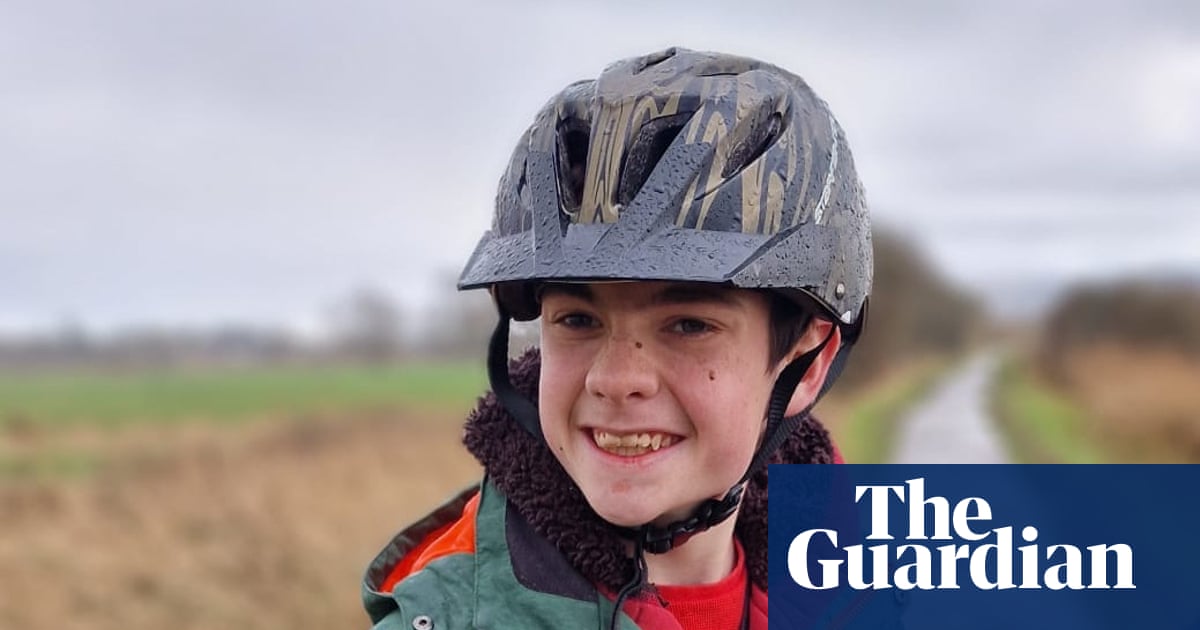A UK teenager with severe epilepsy has become the first person in the world to be fitted with a brain implant aimed at bringing seizures under control.
Oran Knowlson’s neurostimulator sits under the skull and sends electrical signals deep into the brain, reducing his daytime seizures by 80%.
His mother, Justine, said that her son had been happier, chattier and had a much better quality of life since receiving the device. “The future looks hopeful, which I wouldn’t have dreamed of saying six months ago,” she said.
Martin Tisdall, a consultant paediatric neurosurgeon who led the surgical team at Great Ormond Street hospital (Gosh) in London, said: “For Oran and his family, epilepsy completely changed their lives and so to see him riding a horse and getting his independence back is absolutely astounding. We couldn’t be happier to be part of their journey.”
Oran, who is 13 and lives in Somerset, had the surgery in October as part of a trial at Gosh in partnership with University College London, King’s College hospital and the University of Oxford. Oran has Lennox-Gastaut syndrome, external, a treatment-resistant form of epilepsy which he developed at the age of three.
Between then and having the device fitted, he hasn’t had a single day without a seizure and sometimes suffered hundreds in a day. He often lost consciousness and would stop breathing, needing resuscitation. This means Oran needed round-the-clock care, as seizures could happen at any time of day, and he was at a significantly increased risk of sudden unexpected death in epilepsy (Sudep).
The Picostim neurotransmitter is made by UK company Amber Therapeutics. During the surgery, Tisdall and his team inserted two electrodes deep into Oran’s brain until they reached the thalamus, a highly-connected hub in the brain. The wires, which needed placing to a precision of less than a millimetre, were connected to the neurostimulator. This 3.5cm square and 0.6cm thick device was placed in a gap in Oran’s skull where the bone had been removed and anchored using screws to the surrounding skull. It can be recharged through wearable headphones.
Once he recovered from surgery, Oran’s device was switched on, delivering constant mild electrical stimulation to his brain with the aim of blocking electrical pathways that allow seizures to take hold.
“We’ve seen a big improvement, seizures have reduced and are less severe,” said Justine. “He’s a lot more chatty, he’s more engaged. He’s turned 13 and I definitely now have a teenager – he’s happy to tell me no. But that adds to his quality of life, when he can express himself better.”
The cadet pilot (Children’s adaptive deep brain stimulation for epilepsy trial) will now recruit three additional patients with Lennox-Gastaut syndrome, with a view to 22 patients being recruited to take part in a full trial.
Tisdall said: “Every single day we see the life-threatening and life-limiting impacts of uncontrollable epilepsy. It can make school, hobbies or even just watching a favourite TV show utterly impossible.
“Deep brain stimulation brings us closer than ever before to stopping epileptic seizures for patients who have very limited effective treatment options. We are excited to build the evidence base to demonstrate the ability of deep brain stimulation to treat paediatric epilepsy and hope in years to come it will be a standard treatment we can offer.”

